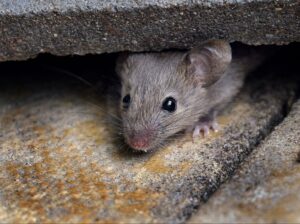Home / Blog / Vole vs Mouse: Identifying the Differences in Your Backyard
Vole vs Mouse: Identifying the Differences in Your Backyard

Scientifically reviewed by Rachel Maldonado
-Published on May 17, 2024
-Updated on August 30, 2024
Vole vs Mouse: Identifying the Differences in Your Backyard
Wildlife is all around us…sometimes in places we’d rather they not be. One of the most common urban wildlife sightings is small rodents. You’ve no doubt seen one dart across the backyard or maybe even inside your home.
But did you know there’s a difference between a vole and a mouse, and that difference is more than academic? Knowing the key similarities and differences when it comes to a vole vs. mouse is vital when it comes to your pest control strategy.
If you want to become a rodent identification expert, this guide is for you.
Your Intro to the Rodent Family
First things first, what do we mean by rodents? Technically speaking, rodents are mammals of the order Rodentia, which are characterized by a single pair of continuously growing incisors in each of the upper and lower jaws that must be kept short by gnawing.
But practically speaking, you encounter two of the most misunderstood members of this family regularly – voles and mice.
Both species are a part of a delicate ecological balance. Voles, as an example, are often seen as pests, but they provide food for a variety of predators, including hawks, owls, foxes, and even weasels, making them an integral part of the ecosystem.
Similarly, while you might not want mice nesting in your walls, they play crucial roles in seed dispersal and act as prey for a variety of animals.
Spotting the Differences
Here’s where you start getting down to brass tacks. Being able to identify whether you’re dealing with a vole or a mouse can help you understand their behaviors and habits, which will help you keep their populations under control.
Physical Attributes
Voles, sometimes referred to as meadow mice, are small rodents that resemble mice but have stouter bodies, shorter tails, and a rounder face with smaller ears. Their eyes are not as prominent as those of a mouse and their fur can range from reddish brown to a grayish color.
Mice are usually smaller and more slender with a pointed snout, larger ears, and long, thin tails. Their eyes are more prominent, and their fur color can vary greatly but usually includes shades of brown, gray, or white.
Behavior and Habitats
Voles got their name of “meadow mice” because they are most often found outdoors in fields and grassy areas. They like to create shallow underground burrows with hidden runways, which lead to the surface. Damaged plants, due to voles’ propensity for gnawing, are often a telltale sign they are present.
House mice prefer to live indoors and will happily take advantage of our warm, cozy spaces, often nesting in cluttered areas. They’re also notorious for chewing on just about everything, an unfortunate habit that can cause quite a bit of property damage.
Understanding Their Impact
Differentiating voles from mice is much more than being able to identify what’s rustling in the bushes; it’s about understanding what kind of threat they might pose.
Voles, despite their sometimes status as pests, contribute significantly to the ecosystem. They’re herbivorous creatures, preferring to feed on grasses, roots, and bark. They’ll even tunnel to consume plants at ground level, which, in turn, can have a substantial impact on vegetation. They also help with soil aeration, a factor that makes them excellent for soil health and agriculture in general.
Unlike voles, mice are generalists and opportunists, meaning they can survive in many habitats and eat a wide range of foods. While they’re not as influential as voles in shaping the environment, they’re much more adaptable and can be found almost anywhere people are, from rural fields to the most urban skyscrapers.
How to Safely Control Mice and Voles
If you’ve determined that you have a rodent issue, the next step is managing it – not just to protect your own property, but to do so in a way that respects these animals’ place in the world.
The best start is preventing them from entering in the first place. Seal up cracks, gaps, and holes with materials not easily chewed or burrowed through.
If you must trap, go for humane options. Live traps capture the rodent without harming it, allowing you to release it away from your property.
Due to the vole’s behavior, tunnels can be baited and then collapsed or trapped to minimize risks to other species.
For mice, snap traps tend to be more effective. Consider using bait that is a food source they are already consuming – that way, you know it’s a food item they prefer.
Finally, you might also consider using natural deterrents, such as certain plants or sonic repellers, to dissuade rodents from setting up camp.
Final Thoughts
By understanding the nuances of these two different species, you play an important role in conservation efforts and local ecology.
Though these tiny critters might sometimes be a nuisance, they can also serve as a powerful reminder that no living creature is without its place in the grand scheme of nature.
While the mouse and vole control tips described above offer a great line of defense when it comes to rodent populations, sometimes, the best course of action is to place your trust in a professional pest control service like Hawx Pest Control. Join our family of satisfied customers and learn how we can help you keep just about any rodent family out of your house, too.
Related Articles
Visit our blog to learn more.
→









